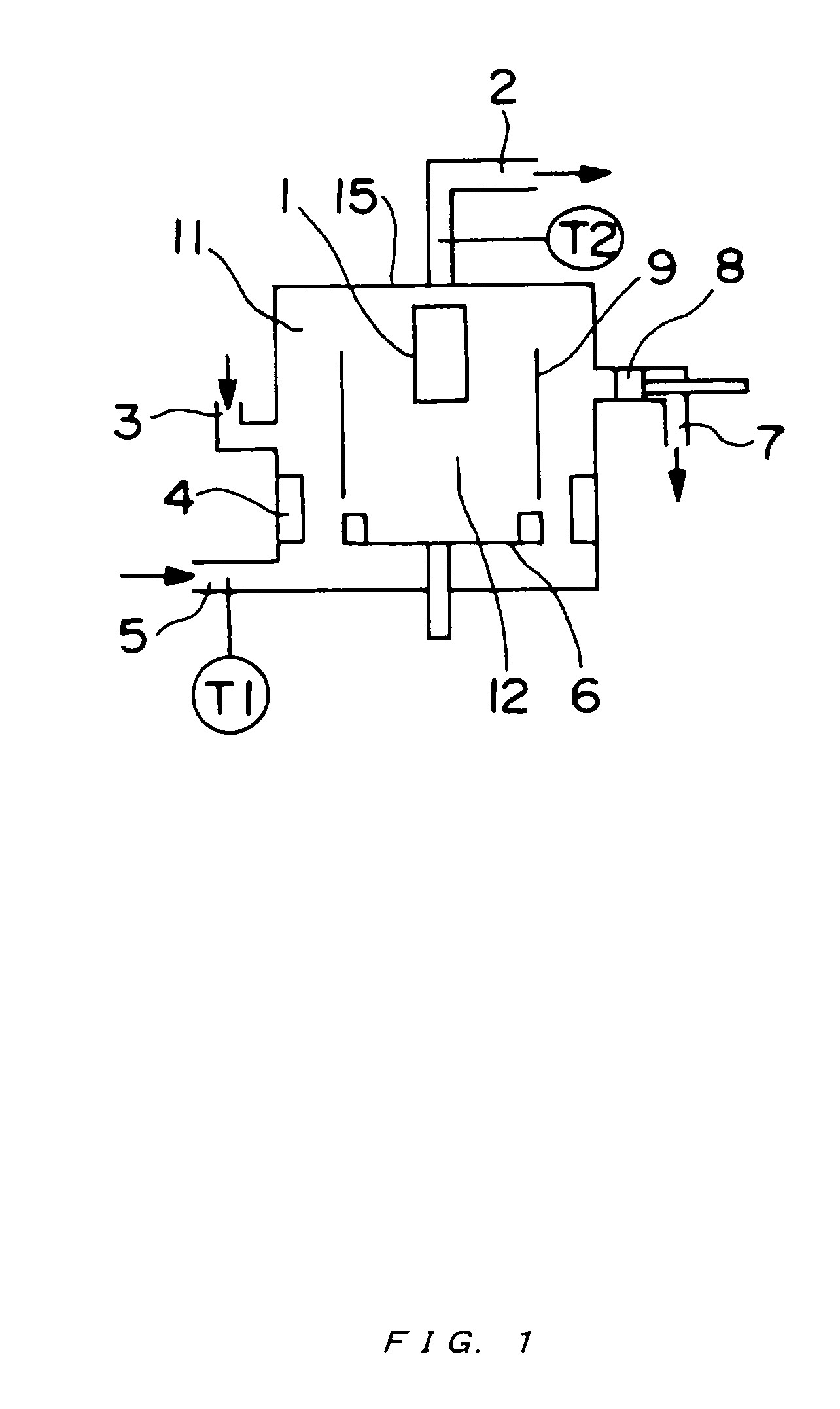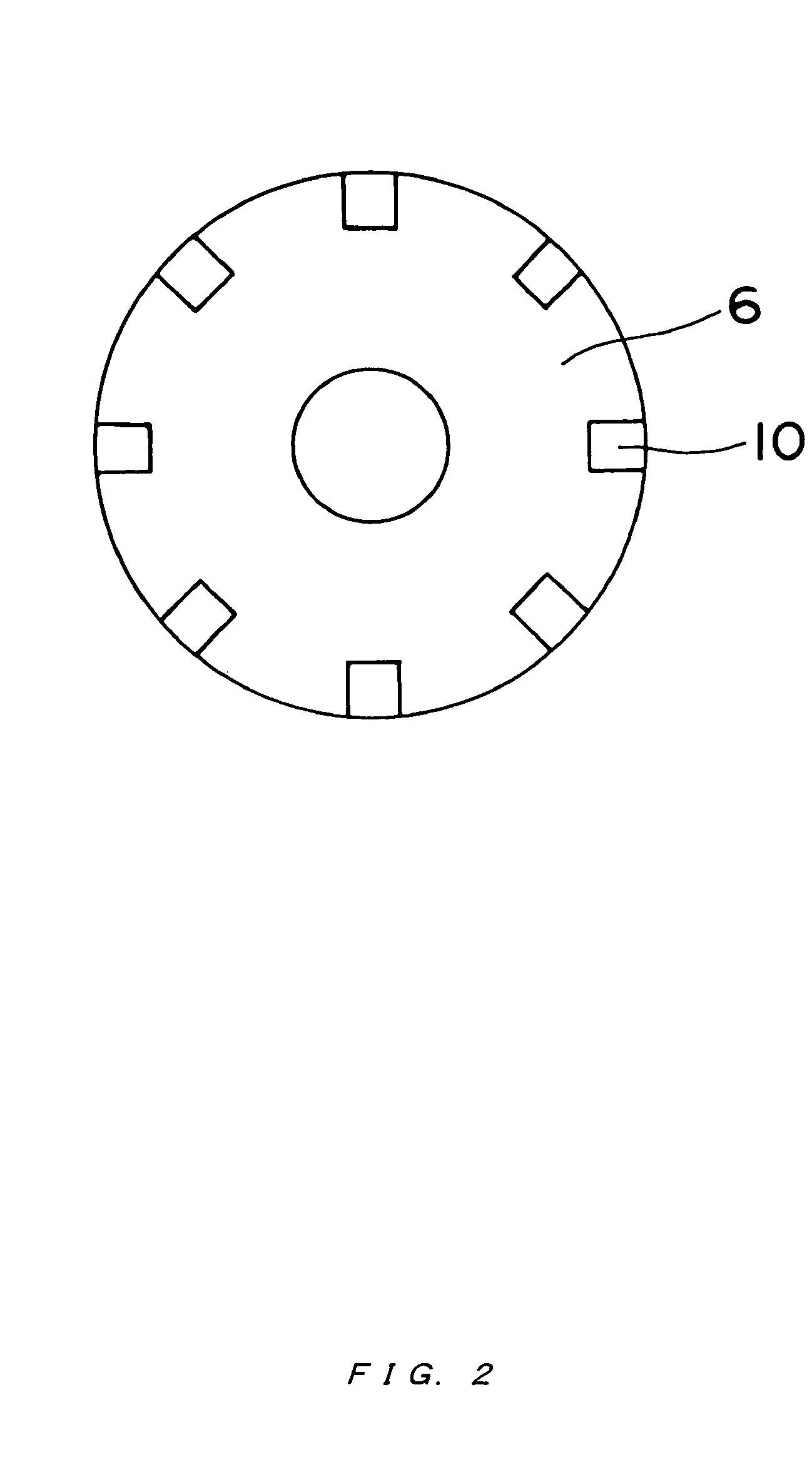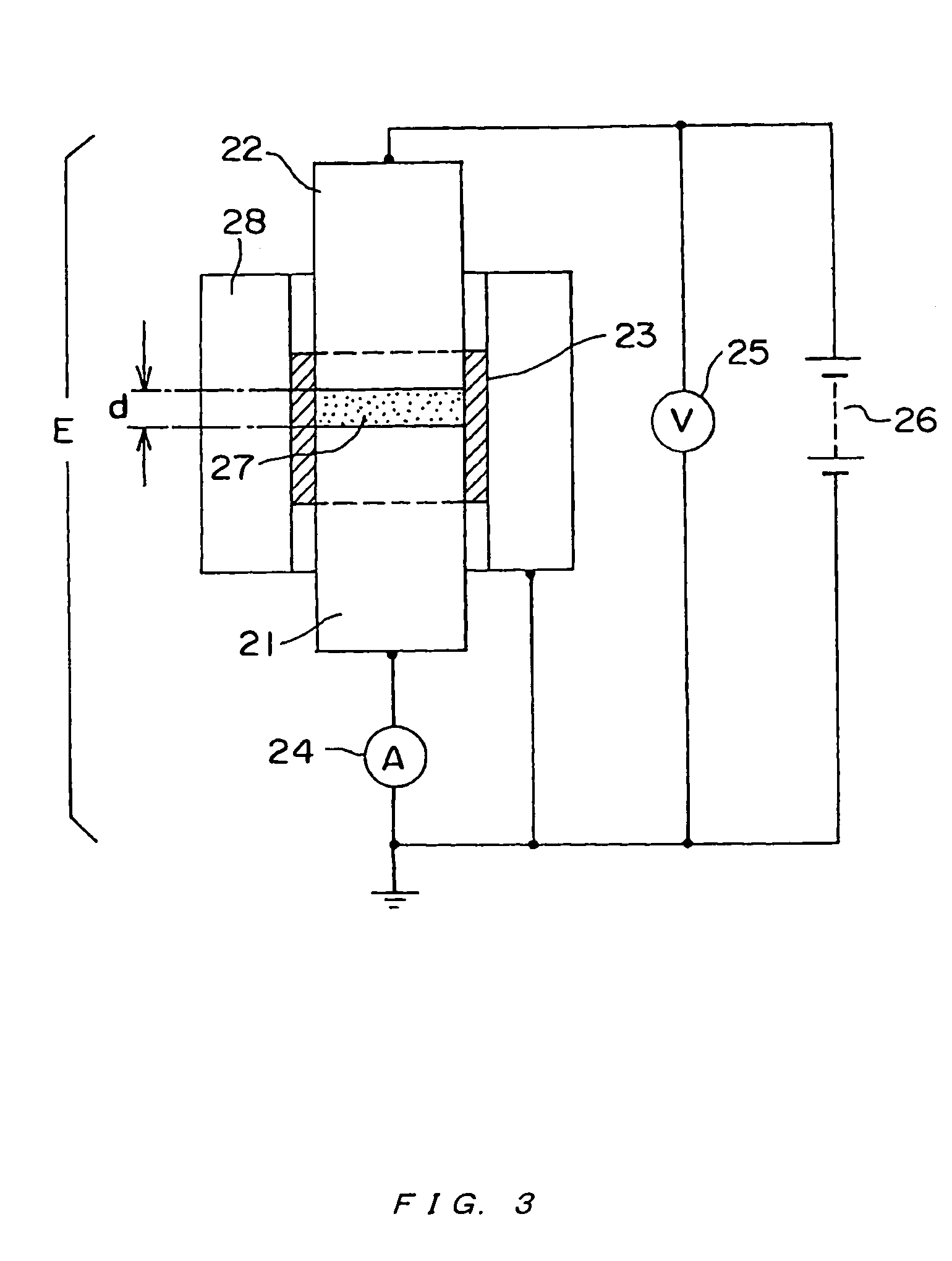Toner and two-component developer
a technology of toner and component, applied in the field of toner and two-component developer, can solve the problems of low mixing property of secondary color, irregularities on the surface of fixed image may become a problem, and achieve the effect of achieving even application, fine line reproducibility, and dot reproducibility
- Summary
- Abstract
- Description
- Claims
- Application Information
AI Technical Summary
Benefits of technology
Problems solved by technology
Method used
Image
Examples
production example 1
Carrier Production Example 1
[0231]Metal oxide particles of Fe2O3, CuO, and ZnO were weighted in such a manner that molar ratios of Fe2O3, CuO, and ZnO would be 50 mol %, 25 mol %, and 25 mol %, respectively. Then, the metal oxide particles were mixed in a ball mill. After the resultant powder mixture had been calcined, the powder mixture was pulverized with the ball mill and was then granulated with a spray dryer. The granulated products were sintered and classified to produce magnetic particles.
[0232]Furthermore, the surface of each of the magnetic particles produced as described above was coated with a thermosetting silicone resin according to the following method. A carrier coating solution containing 10 mass % of a silicone coating resin was prepared by using toluene as a solvent in such a manner that a silicone coating resin amount at the magnetic particle surface would be 1.0 part by mass with respect to magnetic particles at the time of coating.
[0233]The magnetic particles we...
production example 2
Carrier Production Example 2
[0235]4.0 mass % of a silane-based coupling agent (3-(2-aminoethylaminopropyl)trimethoxysilane) was added to each of magnetite powder having a number average particle diameter of 0.25 μm and hematite powder having a number average particle diameter of 0.60 μm. The above components were mixed and stirred in a vessel at a high speed above 100° C., and each fine particle was treated.
[0236]
Phenol10 parts by massFormaldehyde solution (40% of formaldehyde, 6 parts by mass10% of methanol, and 50% of water)Treated magnetite75 parts by massTreated hematite 9 parts by mass
[0237]The above materials, 5 parts by mass of 28% ammonia water, and 20 parts by mass of water were placed in a flask. The mixture was heated to 85° C. within 30 minutes and held at the temperature while the mixture was stirred and mixed. The mixture was subjected to a polymerization reaction for 3 hours, and the yielded phenol resin was cured. After that, the contents in the flask were cooled to ...
production example 3
Carrier Production Example 3
[0241]The surfaces of the magnetic resin particles in Carrier Production Example 2 were coated according to the following method to produce Carrier 3.
[0242]Used as a coating material was a copolymer (with a copolymerization ratio of 8:1 and a weight average molecular weight of 45,000) of methyl methacrylate and a methyl methacrylate ester to which a perfluoroalkyl group represented by the formula (3) (m=7, n=2) is bonded via ester linkage. A carrier coating solution containing 10 mass % of the methyl methacrylate copolymer was prepared by using a solvent mixture of methyl ethyl ketone and toluene as a solvent in such a manner that the amount of the coating material would be 2 parts by mass with respect to 100 parts by mass of the magnetic resin particles at the time of coating.
[0243]The magnetic resin particles were charged into the carrier coating solution, and the solvent was volatilized at 70° C. while a shearing stress was continuously applied to the ...
PUM
| Property | Measurement | Unit |
|---|---|---|
| particle size distribution | aaaaa | aaaaa |
| particle size distribution | aaaaa | aaaaa |
| temperature | aaaaa | aaaaa |
Abstract
Description
Claims
Application Information
 Login to View More
Login to View More - R&D
- Intellectual Property
- Life Sciences
- Materials
- Tech Scout
- Unparalleled Data Quality
- Higher Quality Content
- 60% Fewer Hallucinations
Browse by: Latest US Patents, China's latest patents, Technical Efficacy Thesaurus, Application Domain, Technology Topic, Popular Technical Reports.
© 2025 PatSnap. All rights reserved.Legal|Privacy policy|Modern Slavery Act Transparency Statement|Sitemap|About US| Contact US: help@patsnap.com



